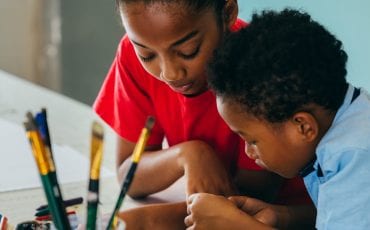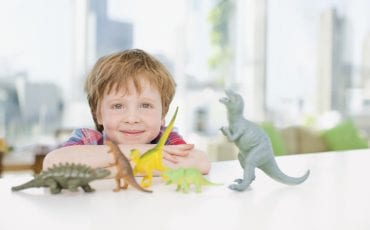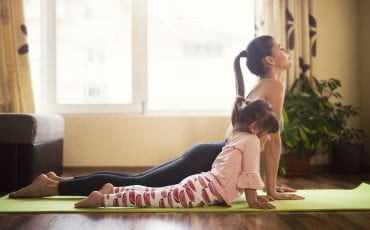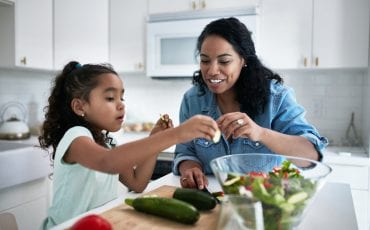Have a Bubble Blast with Kids
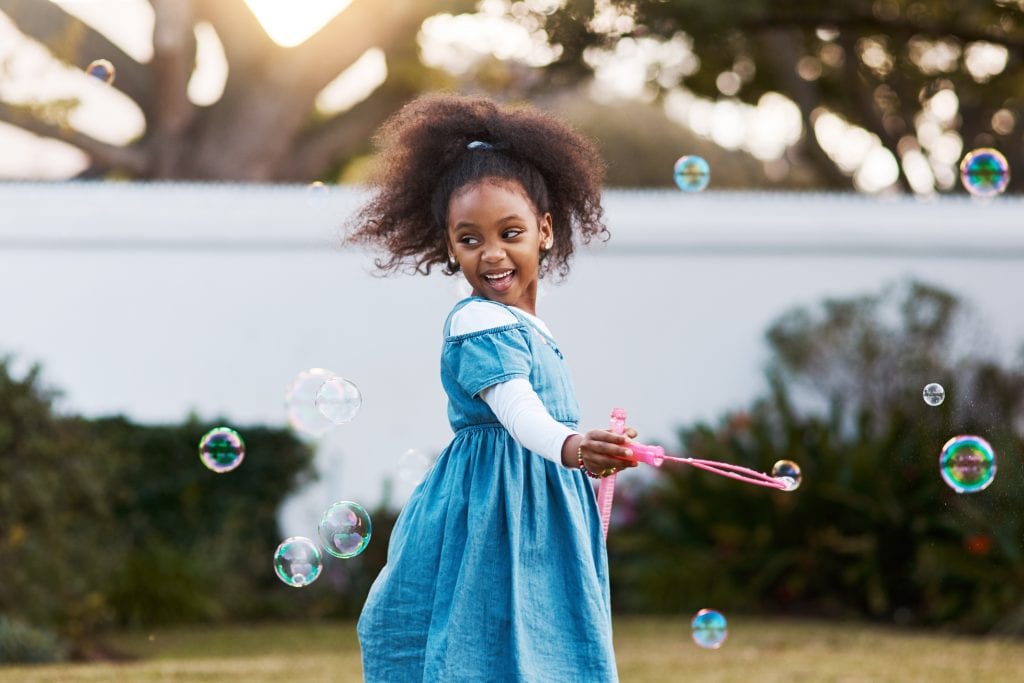
Have a bubbly good time with these bubble-themed activities and crafts for an entertaining way to spend the day.
Table of Contents
Recipes for Bubble-Mania
Make your own bubbles with these recipes.
Basic Bubbles: Mix two tablespoons of dish soap with one cup of water. Ultra Dawn detergent seems to work best.
Magic Bubbles: To create larger bubbles, mix one tablespoon of glycerin with two tablespoons of dish soap. Add nine ounces of water.
Color Bubbles: Add one cup of liquid tempera paint to two tablespoons of dish detergent. Mix in one tablespoon of liquid starch. Be sure to use paints that easily wash out of clothes.
Recipes from creativekidsathome.com.
Create Your Own Wands
A Wand for Big Bubbles: Create giant bubbles at home with this simple trick. Cut two straws in half, making each section six inches long. Cut a string 25 inches long. Pull the string through the straws, tie the string in a knot and hide the knot inside a straw. Place your hands on the straws and pull, creating a square or rectangle shape. Dip the shape into a pan of bubble solution and gently draw it through the air.
Budget-Friendly Wands: Bend a paper clip into a fun shape and dip in bubble solution. Use a fly swatter to produce lots of tiny bubbles or bend a coat hanger into a circle to make one large bubble. Hula-hoops are a good way to make large bubbles by simply dipping one in a baby pool filled with bubble solution.
A Book Break
Learn the science behind bubbles with “Pop! A Book About Bubbles” by Kimberly Bradley and illustrated by Margaret Miller. Yerbert, Froofle and Wumpus conquer their fear of bubbles in “Big Bad Bubble” by Adam Rubin and illustrated by Daniel Salmieri. “Curly’s Fun With Bubbles” by Sherry Boddie and illustrated by Sara Sanchez follows a young boy whose favorite thing is blowing bubbles.
Store-Bought Fun
There’s so much you can do with bubbles. Check out Gazillion’s products for machines that blow 4,500 bubbles a minute. Play Baa Baa Bubbles, where players take turns feeding Bubbles the Sheep, her wool (made of bubbles) grows as she eats. But if she sneezes, she loses her wool and you lose the turn.
Bubbling Bath Bombs
Make bath bombs for a fun science experiment that you and the kids can use later. Ruffles and Rain Boots’ basic bath bomb recipe calls for:
- 1 cup baking soda
- 1/2 cup citric acid
- 15-20 drops essential oils
- a glass or metal bowl
- witch hazel or rubbing alcohol
- coloring, optional
Check out her ideas for Disney Princess-themed bath bombs and Avengers bath bombs.
Double the bubbles with STEAM Powered Family’s Bubble Gum Bath Bombs.
Science Experiments
Bubbles are the perfect opportunity to explore scientific concepts. Steve Spangler Science walks you through making bubbles with dry ice. Create a bubble inside a bubble, make a giant bubble, create snake bubbles, and turn a bubble into a square.
Bubble Painting
Turn bubbles into art with bubble painting. You’ll need:
- colored bubbles, which you can make yourself or add food coloring to a store-bought container
- containers
- straws
- paper or card stock
Store different colored bubbles in different containers. The more food coloring you use, the brighter the colors will appear. Blow the bubbles onto the paper with straws, instead of using wands. See full instructions at Living Well Mom.
A Little Pinch of Perfect used soap pumps instead of straws. A Piece of Rainbow made hers into hydrangeas.
Foamy and Slimy Bubbles
You can combine slime and bubbles at home, creating huge bubbles. Create slime with washable glue and Sta Flo. Insert a straw into the mass to blow enormous bubbles. See full instructions at 123 Homeschool 4 Me.
Create bubble foam using tear-free bubble bath, water and food coloring for a fun sensory activity to entertain your kids. Mix ½ cup water with ¼ bubble bath. Add food coloring and mix with a hand mixer until you create stiff peaks. Put the foam in a dry storage container or bath tub for your kid to play with. See full instructions at Busy Toddler.
– Sarah E. King and Emily Webb


